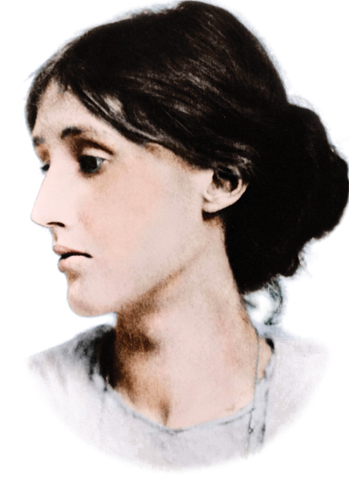15.0 Chapter Introduction
15
Psychological Disorders

Defining Mental Disorders: What Is Abnormal?
Conceptualizing Mental Disorders
CULTURE & COMMUNITY What do Mental Disorders Look Like in Different Parts of the World?
A New Approach to Understanding Mental Disorders: RDoC
THE REAL WORLD How Are Mental Disorders Defined and Diagnosed?
Schizophrenia and Other Psychotic Disorders: Losing the Grasp on Reality
Disorders of Childhood and Adolescence: Difficulties during Development
HOT SCIENCE Optimal Outcome in Autism Spectrum Disorder
Personality Disorders: Going to Extremes
VIRGINIA WOOLF LEFT HER WALKING STICK on the bank of the river, put a large stone in the pocket of her coat, and made her way into the water. Her body was found 3 weeks later. She had written to her husband: “Dearest, I feel certain I am going mad again.…And I shan’t recover this time. I begin to hear voices, and I can’t concentrate. So I am doing what seems the best thing to do” (Dally, 1999, p. 182). Thus, near Rodmell, Sussex, England, on March 28, 1941, life ended for the prolific novelist and essayist, central figure of the avant-
The condition afflicting Woolf is now known as bipolar disorder. At one extreme were her episodes of depression: She was sullen and despondent; her creativity came to a halt; and sometimes she was bedridden for months by her illness. These periods alternated with mania, when, as her husband, Leonard, recounted, “She talked almost without stopping for 2 or 3 days, paying no attention to anyone in the room or anything said to her.” Her language “became completely incoherent, a mere jumble of dissociated words.” At the height of her spells, birds spoke to her in Greek, her dead mother reappeared and scolded her, and voices commanded her to “do wild things.” She refused to eat, wrote pages of nonsense, and launched tirades of abuse at her husband and her companions (Dally, 1999, p. 240).

Between these phases, Woolf somehow managed a brilliant literary life. Her Victorian family had seen no reason for a woman to attend university, but the absence of schooling did not prevent her from becoming the extraordinary intellectual figure celebrated in the title of Edward Albee’s (1962) play, Who’s Afraid of Virginia Woolf? All told, she wrote nine novels, a play, five volumes of essays, and more than 14 volumes of diaries and letters. Her novels broke away from traditions of strict plot and setting to explore the inner lives and musings of her characters, and her observations revealed a keen appreciation of her own experience of psychological disorder. In a letter to a friend, she remarked, “As an experience, madness is terrific…and not to be sniffed at, and in its lava I still find most of the things I write about” (Dally, 1999, p. 240). The price that Woolf paid for her genius, of course, was a dear one, and her husband and companions shared the burden of dealing with her disorder and her death. Disorders of the mind can create immense pain.
IN THIS CHAPTER, WE FIRST CONSIDER THE QUESTION: WHAT IS ABNORMAL? Virginia Woolf’s bouts of depression and mania and her eventual suicide certainly are abnormal in the sense that most people do not have these experiences, but at times she led a perfectly normal life. The enormously complicated human mind can produce behaviours, thoughts, and emotions that change radically from moment to moment. How do psychologists decide when a person’s thoughts, emotions, and behaviours are “disordered?” We will first examine the key factors that must be weighed in making such a decision. We will then focus on several major forms of mental disorder: depressive and bipolar disorders; anxiety, obsessive-
The disorders examined in this chapter represent a tragic loss of human potential. The contentment, peace, and love that people could be enjoying are crowded out by pain and suffering when the mind goes awry to create disorders. A scientific approach to mental disorders that views them through a model that considers the biological, psychological, and social factors that combine to cause disorders (appropriately called the biopsychosocial model) is beginning to sort out their symptoms and causes. As we see in the next chapter, this approach already offers treatments for some disorders that are remarkably effective, and for other disorders, it offers hope that pain and suffering can be alleviated in the future.